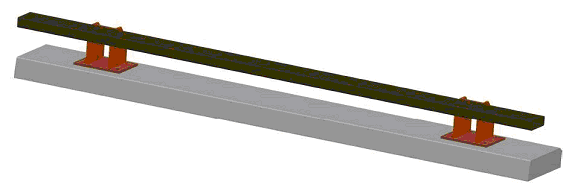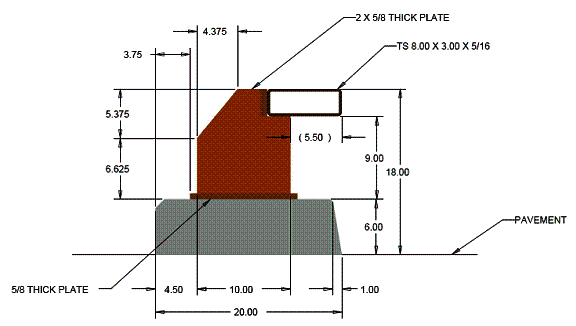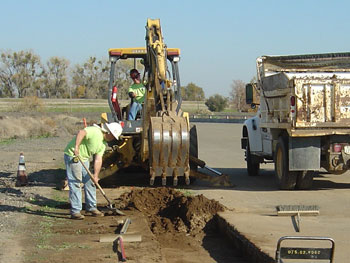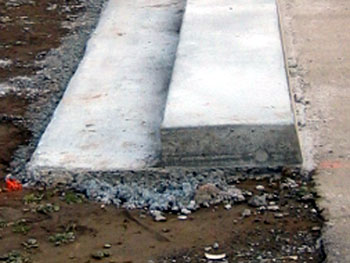Development and Testing of a Low-profile Barrier
Background
In an effort to improve the aesthetics of Caltrans right of way, several Districts have requested to plant trees along the medians of low-speed highways. Current standards typically require trees, shrubs with multiple trunks or groups of small trees to be 30 feet from the traveled way unless shielded by a barrier. Currently, there are no suitable low-profile aesthetic barriers.
Caltrans developed a non-proprietary, permanent, low-profile, narrow barrier to be used with or without soil backing on the non-traffic side. The final design also accommodated the leading request for openings in a barrier which provide a more see-through appearance. The result of project is expected to improve highway aesthetics and reduce project permit delays by local agencies while maintaining motorist safety according to federal requirements.
Development of the Low Profile Barrier
The barrier design concept is shown in Figure 1 and the cross- sectional measurements are shown in Figure 2.

Figure 1. Design concept of Low Profile Barrier

Figure 2. Cross section (units are in inches)
At the mid-eastern side of the Caltrans Dynamic Test Facility, a 1600 cu. ft. (8 ft. x 2 ft. x 100 ft.) uniform soil bed was created for the barrier footing. The relative compaction for this soil bed measured 93%. Next, 330 cu. ft. (3.3 ft. x 1 ft. x 100 ft.) of soil was re-excavated in order to install the barrier footing. Prior to the concrete pour, reinforced steel and anchor bolts for the posts were positioned in the footing formwork. The compressive strength test of the concrete was 5890 psi. The completed barrier was 100 feet long with 9 posts spaced 10 feet with a nominal height of 18 inches.

Construction

Footing Close-up

Post Close-up

Completed Barrier
Impact Conditions
Test 701 (NCHRP Report 350 Test 2-11)
Vehicle: 1990 GMC Sierra 2500 2WD Pickup
Impact Speed: 70.2 km/h
Impact Angle: 25.3°
Test 702 (NCHRP Report 350 Test 2-10)
Vehicle: 1995 Geo Metro
Impact Speed: 70.8 km/h
Impact Angle: 21.0°
High-speed Crash Test Videos
| Test 701 | Test 702 |
| Across (coming soon) | Across (coming soon) |
| Upstream (coming soon) | Upstream (coming soon) |
| Donstrea (not filmed) | Downstream (coming soon) |
| OH Downstream (coming soon) | OH Downstream (coming soon) |
| OH Upstream (coming soon) | OH Upstream (coming soon) |
References
- Roadside Design Guide. American Association of State Highway & Transportation Officials. Washington, DC. 2002 edition (3rd edition): 4-15.
- Highway Design Manual. State of California Department of Transportation. Sacramento, CA. 6th Edition: 900-4.
- Traffic Manual. State of California Department of Transportation. Sacramento, CA. Revised Sept. 13, 2002: Section 7-02
- Report 350, Recommended Procedures for the Safety Performance Evaluation of Highway Features. Transportation Research Board. Washington, DC. 1993.
Contact Information
Vue Her
Vue.Her@dot.ca.gov
Project Engineer
John Jewell
John.Jewell@dot.ca.gov
Senior Engineer
Bob Meline
Bob.Meline@dot.ca.gov
Senior Engineer

